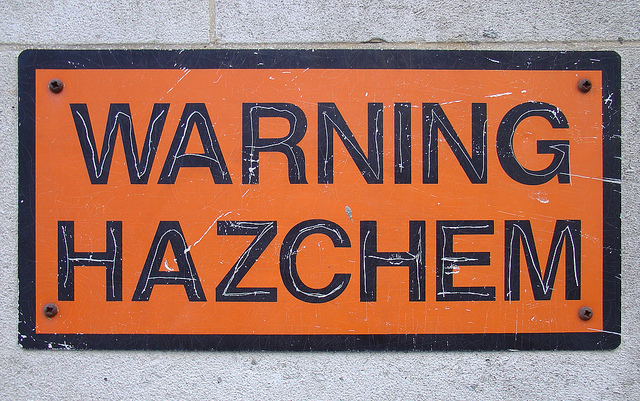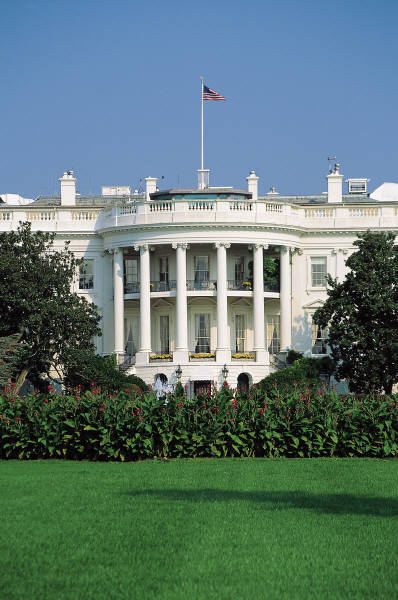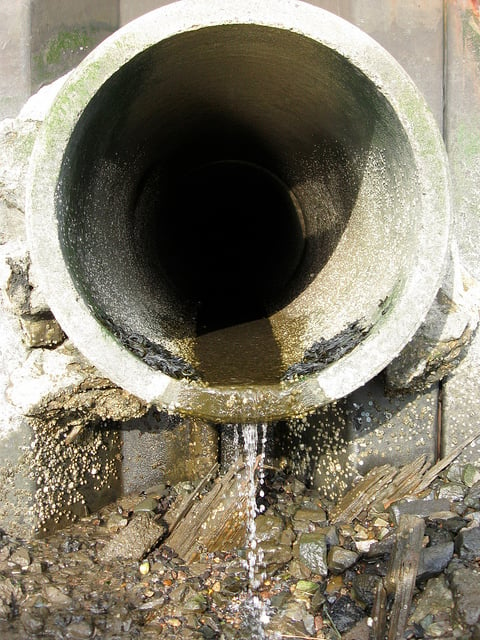All hazardous wastes are not created equal. The basic model is that:
Audit, Compliance and Risk Blog
EPA Excludes Solvent-Contaminated Wipes From RCRA Regulation
Posted by Jon Elliott on Wed, Aug 14, 2013
Tags: Business & Legal, Employer Best Practices, Health & Safety, Environmental risks, Environmental, EHS, EPA, RCRA
If government provided a unified approach to chemical regulation, then each chemical might be subject to a single set of requirements, which ideally would be tailored to reflect chemical-specific hazards throughout its life cycle. Instead, each chemical is subject to its own loosely connected (some would say haphazard) collection of environmental, health and safety (EH&S) requirements. Some are federal, some are state (or provincial if you’re in Canada), and others are regional and even local. You may need to refer to agencies at all three levels (federal, state and local) to identify your regulators and their requirements – although many organizations only deal with the agency responsible for permitting and inspecting day-to-day activities.
Tags: Audit Standards, Environmental risks, Environmental, EHS, EPA, Hazcom, MSDS, mact
Partisan divides in Washington are preventing legislative action to reduce emissions of greenhouse gases (GHGs) and climate change, but President Obama recently announced administrative initiatives to advance these efforts even without Congressional action. His new Climate Action Plan reaffirms domestic initiatives led by the Environmental Protection Agency (EPA), and international GHG emission reduction and climate change efforts. The Plan has the following three main “pillars”:
Tags: Environmental risks, Environmental, EPA, Greenhouse Gas, ghg, climate change
STP Launches New Industry-Specific MACT Standards Guides
Posted by Lorraine O'Donovan on Fri, Jul 12, 2013
Organizations increasingly need specialized guidance in order to self-audit and show efforts to comply with legislation, and demonstrate due diligence.
Tags: Corporate Governance, Business & Legal, Audit Standards, Environmental risks, Environmental, EHS, mact
July 1 was the deadline for subject facilities to file their annual toxic chemical release inventory (TRI) reports with the US Environmental Protection Agency (EPA) and their state, on one of two EPA-mandated forms, Form R or Form A. These TRI reports are mandated by Section 313 of the Emergency Planning and Community Right-to-Know Act of 1986 (EPCRA), which was adopted as the first Congressional response to the December 1984 toxic gas disaster in Bhopal, India.
Tags: Corporate Governance, Business & Legal, Health & Safety, Environmental risks, Environmental, EHS, Hazcom
Environmental Compliance: Changes to California Training Requirements
Posted by Viola Funk on Wed, Jul 03, 2013
California Revises Wastewater Treatment Plant Operator Certification Rules
The latest State Water Resources Control Board (SWRCB) regulatory tweaks broaden coverage but also give wastewater treatment plant owners some welcome wiggle room. Effective April 1, 2013, the SWRCB has revised its regulations regarding wastewater treatment plant classification, operator certification, and contractor registration. The rules have been expanded to cover privately owned wastewater treatment plants. However, they also establish a provisional operator certification. This means owners of Class I wastewater treatment plants who are finding it hard to recruit certified operators may employ provisional operators while conducting their search. In addition, the definition of wastewater treatment plant has been revised to clearly state that water recycling treatment plants are included within the definition. Numerous other key changes affecting California CCR compliance have been made to these regulations.
Tags: Corporate Governance, Employer Best Practices, Health & Safety, California Legislation, Training, Environmental risks, Environmental
PSD Rules Rescinded In Part
Recent court decisions rescind portions of EPA Clean Air Act rules governing Prevention of Serious Deterioration (PSD) and renewable fuels. For example, in October 2010, EPA adopted rules allowing for significant impact levels (SILs) and significant monitoring concentrations (SMCs) for sources of PM-2.5. However, in January of this year the D.C. Circuit upheld most elements of the 2012 standards, but vacated and remanded provisions establishing and applying projections of cellulosic biofuel use. American Petroleum Institute v. EPA, ___ F.3d ___ (D.C. Cir. 2013).
Tags: Health & Safety, OSHA, Environmental risks, Environmental, EPA, ghg
Environmental Compliance: Walmart Pays $110 Million in Fines
Posted by Jon Elliott on Wed, Jun 05, 2013
On May 28 Walmart bundled guilty pleas in a number of pending federal cases alleging environmental compliance violations at some of the company’s 4600+ stores in the U.S. These arose because Walmart had not implemented a corporate hazardous waste management program until January 2006, leaving locations to manage—or mismanage—such wastes.
Tags: Corporate Governance, Business & Legal, California Legislation, Environmental risks, Environmental, EPA, Hazcom
Protecting Stratospheric Ozone A Quarter Century After Montreal
Posted by Jon Elliott on Tue, Apr 23, 2013
The Montreal Protocol on Substances that Deplete the Ozone Layer provides the international framework for protecting the earth’s stratospheric ozone layer, by identifying and minimizing emissions of ozone depleting substances (ODSs). The original Montreal Protocol was initialed in September 1987. The U.S. was an original signatory, ratified in 1988, and became subject to agreed-upon provisions on January 1, 1989. Title VI of the 1990 Clean Air Act Amendments incorporates these international commitments into U.S. law, and assigns the Environmental Protection Agency (EPA) to fine-tune and enforce domestic requirements.
Tags: Business & Legal, California Legislation, Environmental risks, Environmental, EPA, Greenhouse Gas, climate change
Within the U.S., the principal hazardous waste management law is the Resource Conservation and Recovery Act (RCRA) of 1976 (formally codified as Subtitle C of the Solid Waste Disposal Act (SWDA)). The US Environmental Protection Agency (EPA) sets national standards and directly administers RCRA in some states, while state environmental protection agencies administer RCRA and their state acts when authorized by EPA to do so. For domestic activities – including shipments of hazardous waste from a generator to a recycler or treatment, storage and disposal (TSD) facility, that’s enough to know to start compliance.
But if your U.S. organization imports or exports hazardous wastes, you need to know that RCRA incorporates requirements driven by US participation in international treaty - and membership-based organizations. Alternatively, if you’re a non-U.S. reader you may recognize the following elements in your own national requirements.
Exports Consistent with the OECD Agreement
The most relevant international agreement is from the Organization for Economic Cooperation and Development (OECD) – its 1992 “Decision C(92)39/FINAL Concerning the Control of Transfrontier Movements of Wastes Destined for Recovery Operations (OECD Decision)”, as amended. EPA’s RCRA regulations include specific provisions governing “Transboundary Movements of Hazardous Waste for Recovery Within the OECD.” (40 CFR §§ 262.80 – 262.89). As an exception to this coverage, separate rules provide similar requirements for exports to Canada and Mexico (under North American Free Trade Agreement (NAFTA), even though they're also OECD members) (40 CFR §§ 262.80 – 262.89). EPA revises these rules from time to time (most recently in 2010).
The following requirements apply to exports to Canada or Mexico (and to non-OECD countries covered by separate treaties with the U.S.):
(1) The “primary exporter” (typically the generator) provides EPA with a written notification of intent to export, at least 60 days prior to the first shipment. This notification must be in writing, signed by the primary exporter, and include the following information:
-
Name, mailing address, telephone number and EPA ID number of the primary exporter
-
The following information, by consignee, for each hazardous waste type:
- Description of the hazardous waste and the EPA hazardous waste number, U.S. DOT proper shipping name, hazard class and ID number for each hazardous waste
- The estimated frequency or rate at which such waste is to be exported and the period of time over which such waste is to be exported
- The estimated total quantity of the hazardous waste (consistent with Uniform Hazardous Waste Manifest)
- All points of entry to and departure from each foreign country through which the hazardous waste will pass
- Description of mode of transportation (air, highway, rail, water, etc.), and type(s) of container (drums, boxes, tanks, etc.)
- Description of how the hazardous waste will be treated, stored or disposed of in the receiving country (e.g., incineration, land disposal, recycling)
- Name and site address of the consignee and any alternate consignee
- Name of any transit countries through which the hazardous waste will be sent, description of the approximate time it will remain in such country, and the nature of its handling while there.
(2) The receiving country consents to accept the waste.
(3) A copy of an “EPA Acknowledgement of Consent” accompanies the shipment and, unless export takes place by rail, is attached to the manifest.
(4) The shipment conforms to the terms of the receiving country’s written consent.
(5) The shipment complies with RCRA manifest requirements (including the field for international shipments), modified to provide the address of the receiving consignee and alternate instead of facility, and to add the following to the certification of the shipment “and conforms to the terms of the attached EPA Acknowledgment of Consent.”
The primary exporter must notify EPA if the alternate consignee is used. If other problems arise, the primary exporter files an exception report with EPA; this follows requirements for domestic shipments, except that reports are filed with EPA Headquarters. Exporters must file an annual report with EPA summarizing the types, quantities, and destinations of all hazardous waste exported. Records must be retained for at least three years.
Exports to another OECD country instead must meet similar RCRA regulations designed to ensure consistency with OECD requirements. These include incorporation of OECD’s distinction between “Green Wastes” (wastes that present low risk for human health and the environment and, therefore, are not subject to any other controls than those normally applied in commercial transactions) and “Amber Wastes” (wastes presenting sufficient risk to justify their control). These RCRA regulations regulate as hazardous each waste that is a RCRA hazardous waste and/or an Amber waste not otherwise regulated as hazardous, and regulate Green Wastes as non-hazardous. These rules include notifications to EPA and consent by the receiving country similar to those described above, use of a “movement document” analogous to RCRA’s Uniform Hazardous Waste Manifest, and requirements for a contract for transportation and management of the wastes. Exported wastes are to be managed in compliance with the receiving country’s requirements for these activities.
Basel Convention Considerations
In addition to OECD’s provisions, 172 nations and the European Union have ratified the 1989 Basel Convention on the Control of Transboundary Movements of Hazardous Wastes and their Disposal (Basel Convention). OECD revised its Decision in 2001 to align with Basel Convention provisions. President George Bush signed the agreement on behalf of the U.S. in 1989, but the Senate has never ratified it. Absent ratification, the United States cannot participate in waste transfers with Basel Parties without a separate and equivalent bilateral or multilateral agreement. The OECD agreement and NAFTA treaties constitutes such multilateral agreements, and the U.S. also has bilateral agreements with Costa Rica, Malaysia and the Philippines.
Imports of Hazardous Waste
Importers of hazardous wastes must complete manifests for the wastes, substituting their name and facility identifications for the non-domestic generator’s. The importer must provide the transporter with an additional copy to submit to EPA in compliance with the transporter’s manifest requirements. If the import is from an OECD country, the importer must also ensure that the shipment meets OECD requirements.
Implementation Checklist
If your organization is involved in imports and/or exports involving U.S. territory, consider the following checklist. If it is involved in imports or exports involving other OECD countries, the same general issues apply.
Does my organization intend to export hazardous waste, acting as the “primary exporter"?
- If so, is the shipment being sent to:
- Canada or Mexico?
- Another OECD country?
- A non-OECD country?
- Has my organization secured formal consent from the receiving country?
- Has my organization notified EPA of its intent to export?
- Has my organization received EPA’s acknowledgement of the receiving country’s consent?
- Does each shipment comply with domestic U.S. manifest requirements, and applicable requirements of the receiving country?
- Does the organization retain all required records?
- Does my organization intend to import hazardous waste?
- If so, is the shipment being sent from:
- Canada or Mexico?
- Another OECD country?
- A non-OECD country?
- Does each shipment comply with domestic U.S. manifest requirements?
- Does the organization retain all required records?
Where can I go for more information?
-
EPA Hazardous Waste Import/Export webpage www.epa.gov/compliance/monitoring/programs/rcra/importexport.html
-
OECD webpage on transboundary movements of hazardous wastes www.oecd.org/env/waste/theoecdcontrolsystemforwasterecovery.htm
-
Basel Convention www.basel.int
Tags: International, Health & Safety, Environmental risks, Environmental, EPA, Hazcom










